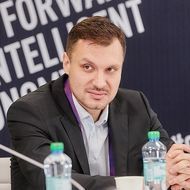Smart Money Market

Huge investments into high tech companies is a key innovation development tool in most countries — leaders of the global economy. Employees of the Russian Cluster Observatory of the HSE Institute of Statistical Studies and Economics of Knowledge made first estimates of the global high tech innovation activity and compared countries’ contribution into the global pool of leading institutions and people in fields of science, technology and creative industries.
Global Poles of High Tech Investment
By total investment in high tech companies in 2021, the US is ranked 1st ($353.8 US billion), followed by China (91.3), United Kingdom (54.9), India (41.7), and Australia (25.5). The total investment for all five countries is 72.9%; with the US having the largest share (45.4%). China comes second (11.7%). Russian is ranked 38th with total investment of $ 0.8 US billion (calculated only for high tech companies registered in Russia).
Synergy of Smart Money and Best Brains
Let us take a look at the correlation between the total levels of investment into high tech and other indicators of innovation development, like: the number of unicorn companies, corporations with largest R&D expenditure, number of highly cited researchers, number of Nobel Prize laureates and Fields Medal winners, and most successful representatives of creative industries. Let us adjust the previous graphic by adding 20 countries to it. When we compare the total number of investment transactions with five new indicators, we see that the scale of funding is clearly linked to the presence of innovative companies and leading institutions and personalities in science and creative industries.
The strongest link is between indicators of the total investment and number of unicorn companies, as well as the number of highly cited researchers (correlation coefficient — 0.98), slightly weaker — with Nobel Prize laureates and Fields Medal winners and leaders of creative industries (0.95), then — with largest tech companies (0.87). The strongest correlation links suggest that the leaders of the knowledge economy tend to be located in countries with largest financial capabilities.
Therefore, the top-5 counties by high tech investment (United States, China, United Kingdom, India, Australia) amount to 72.9% of such investment, 60.4% of companies with largest R&D expenditure, 78.9% of unicorn companies, 65.9% of highly cited researchers, 64.8% of Nobel Prize laureates and Fields Medal winners, and 46% of leaders of creative industries.
The next five countries (Germany, France, Canada, Brazil, Saudi Arabia) have 10.2% of investment, 8.9% of largest innovative companies, 8.1% of unicorn companies, 12.6% of highly cited researchers, 10.9% of Nobel Prize laureates and Fields Medal winners, 15.4% of leaders of creative industries.
Simultaneously, there are countries where the number of knowledge economy leaders exceeds the amount of total investment: Chinese Taipei and Japan — in part of largest innovative companies: Russia, France, and Switzerland — Nobel Prize laureates and Fields Medal winners, Russia, France, and Italy — leaders of creative industries, China — largest innovative companies and unicorn companies.
The research of the HSE ISSEK Russian Cluster Observatory has demonstrated that people are also very important — talents flock together. For example, highly cited researchers and Nobel Prize laureates need recognised educational and scientific institutions; producers of AAA+ games need the best developers, writers, and musicians; leading advertising agencies — large customers, like corporations, etc. We often see how high tech is merging with creatives. For example, in 2014–2016, The Walt Disney Company (a media corporation, producer of most popular animation movies) was ranked 4th among Los Angeles institutions by patents. Also, many leading Russian designers and architectural bureaus attribute their success to engaging customers and employers, like Yandex, Sber, and Rostech.
Talents in Russia: Bury Them in the Ground or Fertilise with Smart Money?
If we take a look at the Russia’s profile, we notice that talents (demand) exceeds the financial capabilities (supply). Russia is ranked 7th in the world by living Nobel Prize laureates and Fields Medal winners, 18th — by leaders of creative industries, and 35th — by highly cited researchers. Simultaneously, by number of high tech transactions Russia occupies 38th rank in the world, which is considerably lower than its positions among other countries by the size of the economy (ranked 6th) and gross domestic expenditure on R&D (ranked 9th). Meaning, even the money the country already has are rarely invested into high tech companies.
The results of various studies show that Russia’s possible weakness is large corporation systems that can discover, use, and monetise technical and creative talents, and provide them with competitive working conditions. We see only three Russian companies in the 2500 Industrial R&D Scoreboard, and no Russian companies among unicorn start-ups. For the sake of the comparison, we must add that unicorn companies are present in many countries that have the same level of development as Russia, for example, the BRICS countries: South Africa has 2, Brazil — 18, India — 74, Chine even ranks second (275) by the number of unicorn companies and follows the US in that regard. There are unicorns in Latin America as well: Mexico (17), Argentina (1) and in Africa: Senegal (1).
Unicorn companies — that develop effective market solutions, create new jobs in the tech sector, attract new investment from the whole world — became a new characteristic of successful innovation systems.
Comment

Evgeniy Kutsenko: Director of HSE ISSEK Russian Cluster Observatory:
Investors that have successfully invested into high tech companies are an entirely separate and rare bunch of people. Say, in the US such transactions are usually made with participation of investment companies (for example, Tiger Global Management, Insight Partners) and investment banks (Goldman Sachs); in China there are usually largest tech companies that participated in these transactions (Tencent, Xiaomi, Alibaba). In some countries key investors are state foundations (for examples, Temasek in Singapore or Qatar Investment Authority in Qatar). Russia is yet to find its combination of leading investors into fast-growing high tech companies. And here we need to think about how to support these activities in two ways: those who generate ground-breaking market projects and those who are prepared to take the risk of investing in them. Both sides must develop concurrently, because if one lags behind the other, their success will be nullified.
Sources: the results of the ‘Comprehensive Analysis of Current Practices for Accounting Gross Domestic Expenditure on R&D from Extra-Budgetary Sources in the Russian Federation and foreign countries’ of the Basic Research Programme commissioned within the HSE institutional R&D funding.
By Evgeniy Kutsenko, Viktoria Boos, and Kirill Tyurchev
With contributions by: Vasily Abashkin, and Sergey Artemov
